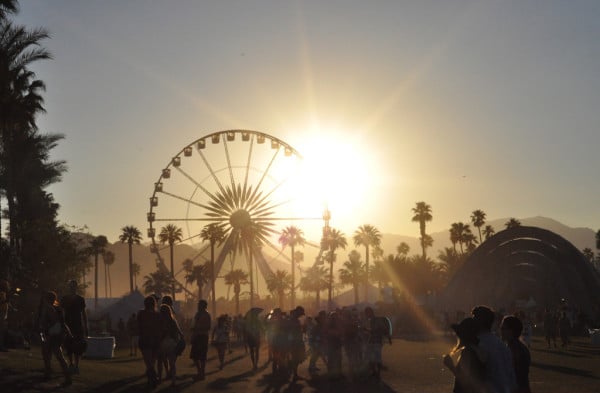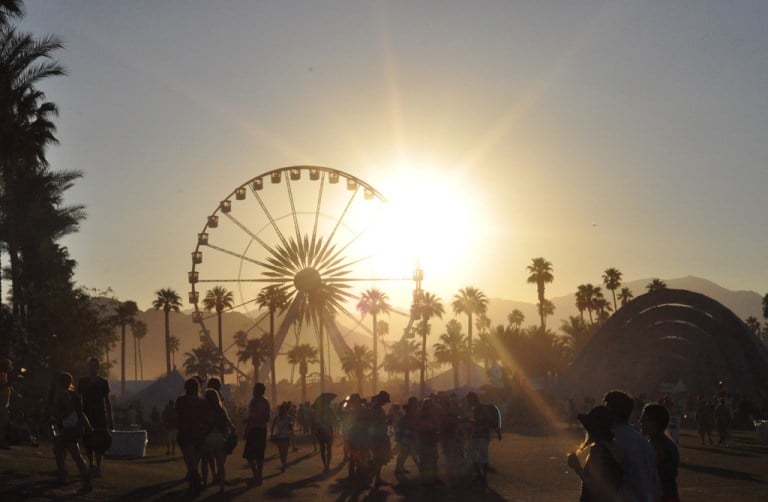
At Coachella, I was reminded of the enduring power of live performance. Music festivals add performative and visual dimensions to music, exceeding simple concerts with much bigger visuals, larger crowds, more hype and competition with other acts. Under these circumstances, musicians bare their entire artistic capital — guests, new versions of old songs, hastily organized Prince tributes — to transform their sound into show. As they feed off the highs of a vast performance and the audience’s awe, the crowd gets to see what they’re really made of.
This mutual involvement can deal a blow to artists, when, as in Zella Day’s otherwise charming set, she turned the mic to the audience only to find that few knew her lyrics. But the experience can be thrilling for artists too. Major Lazer and Halsey, for instance, designed exhilarating sets. Halsey, new wave pop starlet, started her set with the provocative and unsettling “Gasoline,” the stage blowing pillars of fire with the first chorus. During a brief pause in a song, she probed the audience dramatically, “How many of you came here to escape the bullshit of your everyday lives?” When the huge crowd erupted with affirmation, she yelled, “That is what this album is about!” With dramatic effects and a gargantuan sound system, she brought her album to life for the audience.
Major Lazer also prompted crowd participation, pre-empting every drop with a four-count of “Jump, jump, jump, jump!” At another time, the reggae-EDM collective (Diplo, Walshy Fire, Jillionaire) induced the crowd to run right, then run left, then both ways again, in sync to the beat. They brought out studio artists from their own songs — Nyla, Fuse, MØ — as well as Usher. For dance music sets like this, crowd involvement is the lifeblood, intrinsically vindicating the music’s quality and the set’s success.
But expanding their song to show revealed an uglier face. A group of scantily clad dancers paraded around the stage from the set’s first song, without adding much to the set except sex appeal. When Usher joined Major Lazer to perform Prince’s “I Would Die 4 U” and “1999,” his microphone faltered. As three expert DJs danced casually on stage, Usher was almost inaudible.
Though the two-way gaze of a live venue promises fulfillment for modern EDM artists, it also holds a certain inviability. The Jack Ü set turned me off from the duo, as Diplo strutted around stage as a glorified hype man. Huge props populated the stage, like a guy in a Febreeze bottle costume, without clear intent beyond Snapchat value. They remixed an incoherent collection of top-40 hits to keep the audience interested.
Zedd’s set, high on visuals, gratuitously emblazoned his name on every screen (and, in fact, the set itself) in distasteful show of ego. Except for some brief drumming, Zedd seemed to do little during a set that probably just required him to push play.
Calvin Harris, Sunday’s headliner, played an uninspired sequence of his own hit singles. With much to gain but little to offer live, EDM artists just can’t stand up to the high standards of venues like Coachella. Desperately, they turn to flash, hype and the cults of personality which propelled them to fame, wearing at the pretense that their music matters.
On Saturday night, Grimes offered an alternative. Admittedly, she indulged the audience somewhat, playing the more popular side of her discography. She, like so many musicians, set out for the high of a thrilled audience. But frantically, the Canadian singer-producer ran from keyboard to stage, starting loops, joining dancers, singing. Her involvement with electronica isn’t ever complete; it’s purposely ongoing, which makes her so necessary during her own set and makes every development so unpredictable. Between songs, which she started and ended strictly at her own pace, she provided background on her work. Talent shone through work about which I was previously ambivalent. Live, she won a fan.
Contact Joshua Seawell at jseawell ‘at’ stanford.edu.
